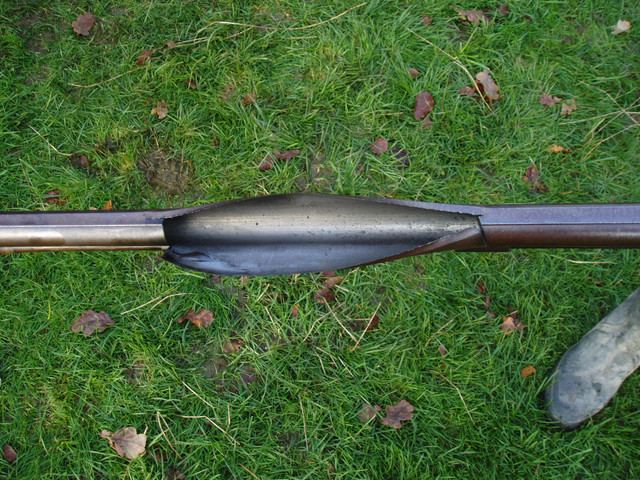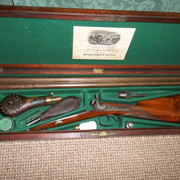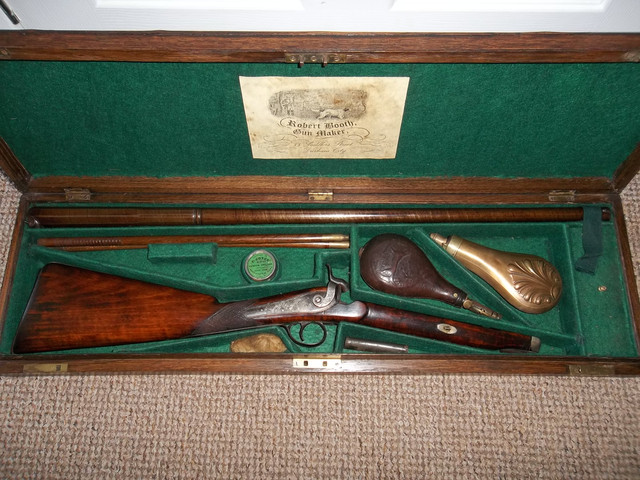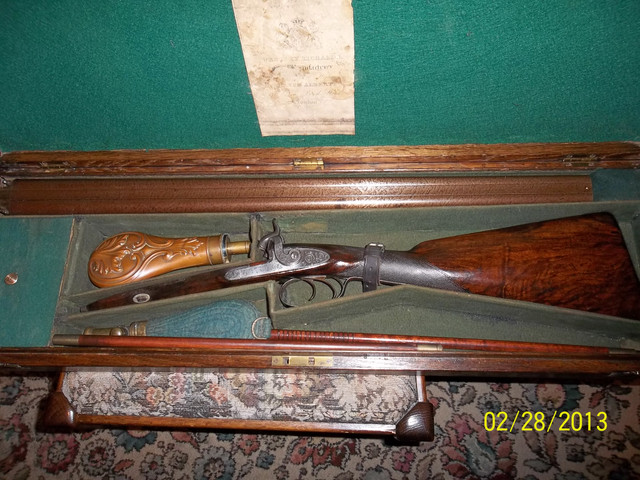robinghewitt
62 Cal.
- Joined
- Jun 26, 2004
- Messages
- 2,605
- Reaction score
- 23
This is a bit like wading through treacle. Let me try one last time to lead you through my logical progression...
In my chemistry book, wrought iron is defined as, "practically pure iron interspersed with 2 to 3 per cent. of of slag, and so worked as to have a fibrous structure". It is the burning out of the impurities that raises the melting point and causes the bloom to form. The key word here is fibrous.
The blacksmith at Rodmell forge told me that period damascus iron barrels came unwound when worked. It is not credible to suppose he knew more about the stuff than the people who were making it.
The mere existence of this barrel by H&S, Hollis and Sheath?, shows that someone thought that slicing it across the grain by cutting rifling was a bad idea.
I am merely suggesting that folk look at their period damascus rifled pieces, possibly at the breech end with an open mind should the opportunity present itself. Maybe dab on a little something to reveal the metal grain. Might you actually look at that pistol barrel end on or have you already deemed it a completely pointless excercise?
In my chemistry book, wrought iron is defined as, "practically pure iron interspersed with 2 to 3 per cent. of of slag, and so worked as to have a fibrous structure". It is the burning out of the impurities that raises the melting point and causes the bloom to form. The key word here is fibrous.
The blacksmith at Rodmell forge told me that period damascus iron barrels came unwound when worked. It is not credible to suppose he knew more about the stuff than the people who were making it.
The mere existence of this barrel by H&S, Hollis and Sheath?, shows that someone thought that slicing it across the grain by cutting rifling was a bad idea.
I am merely suggesting that folk look at their period damascus rifled pieces, possibly at the breech end with an open mind should the opportunity present itself. Maybe dab on a little something to reveal the metal grain. Might you actually look at that pistol barrel end on or have you already deemed it a completely pointless excercise?















